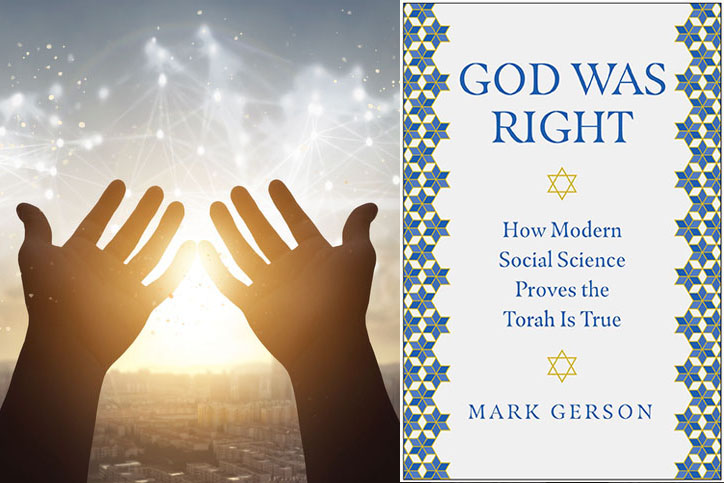
The plainspoken title of “How Old Is the Hebrew Bible?” by Ronald Hendel and Jan Joosten (Yale University Press) poses a simple question, but the answer is a work of scholarship that offers an elegant solution to an enduring mystery.
For pious Jews, of course, the Bible was given by God to Moses at Sinai, but scholars have long debated when, where and by whom these writings were first set down. Some revisionist historians insist that the Bible in its entirety is a product of the Hellenistic age, but according to Hendel and Joosten, the truth is much more complicated and much more intriguing. Some passages represent “the oldest age of biblical literature,” predating the period when King David and his successors reigned in ancient Israel, perhaps as early as 3,000 years ago. Other passages — and some entire books — were arguably composed during or after the Babylonian Exile of the sixth century B.C.E. The most recent books of the Bible are dated as late as the second century B.C.E.
These theories of age-dating are explained — and often criticized — in “How Old Is the Hebrew Bible?” The authors point out that the Bible “is a brittle text, fracturing under the slightest pressure,” and they point out the “strata and fragments” that serve as dating tools to place a particular passage at a specific point in history.” Spelling, vocabulary, “conscious archaizing” of late texts, and even scribal mistakes show “how the language and text change over time.”
Hendel is the Norma and Sam Dabby Professor of Hebrew Bible and Jewish Studies at the University of California, Berkeley, and Joosten is the Regius Professor of Hebrew at the University of Oxford. Their book is the latest title in the Anchor Yale Bible Reference Library, a series that seeks “to present the best contemporary scholarship in a way that is accessible not only to scholars but also to the educated nonspecialist.”
“It’s a kind of whodunit in which words serve as clues and a lens through which we can learn new and wonderful things about the ancient writings the world regards as sacred scripture.”
Some knowledge of Hebrew is required to appreciate the fine points of argument, but any reader who can parse the Hebrew text of the prayer book or the Hertz Bible will be able to understand the evidence that the authors find in the ancient scriptures. In one example, the Hebrew name of King David is spelled ﬢ וּ ﬢ (daled, vav, daled) in the Tel Dan inscription, which dates to the ninth century B.C.E., but the same name is predominantly spelled ﬢ וּיּ ﬢ (daled, vav, yod, daled) in Chronicles, Ezra, Nehemiah and other biblical books that originated several centuries later during the Persian period. The addition of the internal yod in David’s name, the authors explain, “is characteristic of later spelling practices, as reflected in the Second Temple-period texts and inscriptions.” So the presence or absence the yod is itself a time marker.
The authors describe in detail how the language in the various books of the Bible can be assigned to one of three major categories — Classical, Transitional, and Late Biblical Hebrew. But they also point out outliers, including fragments of genuinely archaic language preserved in passages that were composed in Classical Bible Hebrew, and intentionally “archaized” fragments appearing in texts that were composed in Late Biblical Hebrew. The Dead Sea Scrolls, which were written in “Qumran Hebrew,” and the early Greek and Aramaic translations of the Bible allow scholars to triangulate on the age and origins of the Masoretic Text, which has long been regarded as the definitive version of the Hebrew Bible. The presence or absence of “loanwords” from Aramaic, Persian and Greek and “pseudoclassicisms” can be used as a kind of linguistic fingerprint to identify the era when a particular passage was first composed or later redacted.
The use of Late Biblical Hebrew, by way of example, betrays the claims of ancient authorship that have come to be associated with some books of the Bible. “The book of Daniel is situated with the sixth century but has since long been unmasked as a writing of the Hellenistic age because of its manifest allusions to the Maccabean wars,” the authors write. “Ecclesiastes is fictively attributed to Solomon but is similarly recognized as one of the latest books of the Hebrew Bible.”
Similarly, when the First Book of Chronicles depicts the delivery of what the authors call a “fund-raising speech for the temple,” King David asks for the donation of “ten thousand darics,” which was “the most expensive coinage of the Persian era.” Yet the daric did not come into common usage in ancient Israel until several centuries after the presumed lifetime of David, and the mention of darics points to the Second Temple era. “In the book of Kings, David dies well before the preparations for the temple construction,” the authors point out. “In Chronicles, David is the nation’s founding father who initiates all of the major royal and religious institutions.”
Indeed, the back-dating of a biblical story is often undercut by the choice of language. The book of Daniel, as noted above, may be set in the time of the Babylonian Exile, but when the biblical author describes the royal orchestra in the court of Nebuchadnezzar, he identifies five instruments by their Greek names. “There are perfectly good Aramaic words for these kinds of instruments,” Hendel and Joosten argue, “but the author used Greek words to provide an aura of prestige and foreign elegance.”
“How Old Is the Hebrew Bible” bears a weighty subtitle: “A Linguistic, Textual and Historical Study.” Indeed, it is a serious monograph that confronts some of the hottest controversies in biblical scholarship. But it is also a kind of whodunit in which words serve as clues and a lens through which we can learn new and wonderful things about the ancient writings the world regards as sacred scripture.
Jonathan Kirsch, attorney and author, is the book editor of the Jewish Journal.


































